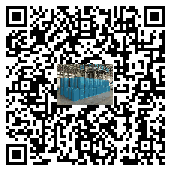Water-Based Unstable Foam Leveling Agents: The Art of Balancing Coating Performance
Introduction
In water-based coating systems, leveling and foam control have always been the two core contradictions that drive
technological breakthroughs. While traditional leveling agents can eliminate surface defects such as orange peel and
brush marks, they often lead to foam stabilization issues due to excessive surface tension reduction. Through
innovative molecular design and mechanism of action, water-based unstable foam leveling agents successfully
achieve a dynamic balance between leveling efficiency and bubble control, becoming a key technological breakthrough
in the modern coatings industry. This article will systematically analyze the unique value of this innovative material
from three perspectives: technical principles, environmental benefits, and application advantages.
I. Technical Principles: From Surface Chemistry to Dynamic Equilibrium
1. Surface Tension Gradient Control
The core advantage of water-based unstable foam leveling agents lies in their precise control of surface tension.
Taking acrylic leveling agents as an example, the long-chain alkyl groups (C4-C8) in their molecular structure impart
moderate incompatibility to the material, enabling the leveling agent to spontaneously migrate to the paint-air interface.
This migration follows the principle of minimum energy: when the surface tension of the leveling agent (20-30 mN/m) is
lower than that of the coating system (30-60 mN/m), the molecules spontaneously aggregate at the interface, forming
a monolayer.
Experimental data shows that using a polyacrylate leveling agent with a molecular weight of 8,000-12,000 can reduce
the coating surface tension difference from an initial 15 mN/m to less than 3 mN/m, effectively suppressing the
formation of Bénard cells. This surface tension equalization improves long-wave leveling efficiency by over 40% while
also avoiding the foam stabilization caused by excessive surface tension reduction.
2. Dynamic Compatibility Balancing
Silicone leveling agents achieve foam stabilization through molecular structure design. For example, in
polyether-modified silicone oils, the siloxane segments (m segments) in their molecular structure provide low surface
tension, while the polyether segments (n segments) regulate compatibility. When the m/n ratio is controlled between
1:2 and 1:3, the leveling agent maintains sufficient surface activity while avoiding bubble stabilization caused by excessive
migration.
Research shows that a leveling agent with this structural design, at a 0.5% addition level, can reduce the paint contact
angle from 75° to 55° while simultaneously controlling the foam half-life to less than 10 seconds, achieving both leveling
and defoaming effects.
3. Precise Molecular Weight Control
The molecular weight distribution of a leveling agent directly impacts its effectiveness. High molecular weight (>10,000)
acrylic leveling agents form a micro-network structure in the paint due to steric hindrance, inhibiting sag while maintaining
leveling. Low molecular weight (<5,000) varieties, on the other hand, achieve short-wave leveling through rapid migration.
By formulating a gradient molecular weight, it is possible to simultaneously address the conflict between leveling during
application and anti-sag during curing.
II. Environmental Benefits: A Booster for Green Coatings
1. Low VOC Emissions
Water-based leveling agents are completely soluble in water, eliminating the need for organic solvents. This reduces VOC
emissions from coating systems to less than 50g/L, significantly lower than the 400-600g/L of traditional solvent-based
coatings. This complies with EU REACH regulations and China's GB 18582-2020 standard.
2. Improved Biodegradability
Some new leveling agents utilize plant-based raw materials (such as castor oil derivatives) with biodegradation rates
exceeding 90%, significantly reducing the environmental impact compared to petroleum-based products
(degradation rates <60%).
3. Reduced Energy Consumption
This improved leveling efficiency shortens coating drying time by 20%-30%, indirectly reducing production energy
consumption. One factory demonstrated an 18% reduction in energy consumption in the drying process after
implementing this technology.
III. Application Advantages: Dual Improvements in Efficiency and Quality
1. Significantly Reduced Defect Rate
Pinhole Defects: By suppressing and stabilizing bubbles, the pinhole rate has been reduced from 8% with
traditional processes to below 1%.
Orange Peel: Improved leveling efficiency has increased the Orange Peel Index (DOI) from 65 to 85.
Brush Mark Coverage: Brush mark coverage on walls has been reduced from 15% to 2%.
2. Extended Application Window
The intelligent responsive leveling agent (temperature/pH dual-responsive) extends the application temperature
range from 15-30°C to 5-35°C, while also increasing the upper limit of wet film thickness by 30%, reducing the
number of re-applications.
3. Comprehensive Cost Optimization
Additive Simplification: Integrating leveling and defoaming functions reduces the number of additives and
formulation complexity.
Reduced Rework Rate: In a case study, an automotive company saw a reduction in rework rates from 12% to
4%, resulting in annual cost savings exceeding 2 million yuan.
Efficiency Improvement: Spraying efficiency increased by 20%, and equipment utilization increased by 15%.
IV. Future Trends: Innovation in Materials Science
1. Nanotechnology Integration
A composite leveling agent grafted with nanosilica (particle size 10-20 nm) can reduce leveling time by 40% and
keep foam volume below 2 ml at a 0.8% addition rate.
2. Intelligent Responsive Design
A temperature/pH-responsive leveling agent achieves low viscosity leveling during the application phase (25°C) and
high viscosity anti-sagging during the curing phase (60°C). Preliminary experiments show a 50% increase in leveling
efficiency.
3. Breakthrough in Bio-Based Raw Materials
Castor oil-based acrylic leveling agents maintain 90% of their traditional performance while reducing their carbon
footprint by 65%, offering a new path to sustainable development.
Conclusion
The technological breakthrough of water-based foam-stabilizing leveling agents is, in essence, a precise interpretation
of surface chemistry contradictions achieved through materials science. By achieving a dynamic balance between
leveling efficiency and bubble control through molecular design, this not only promotes the environmental
transformation of the coatings industry but also provides a new paradigm for the development of functional
additives. With the convergence of cutting-edge fields such as nanotechnology and smart materials, this niche
sector is poised to generate more disruptive innovations, ultimately achieving a perfect balance between coating
performance and ecological benefits.


